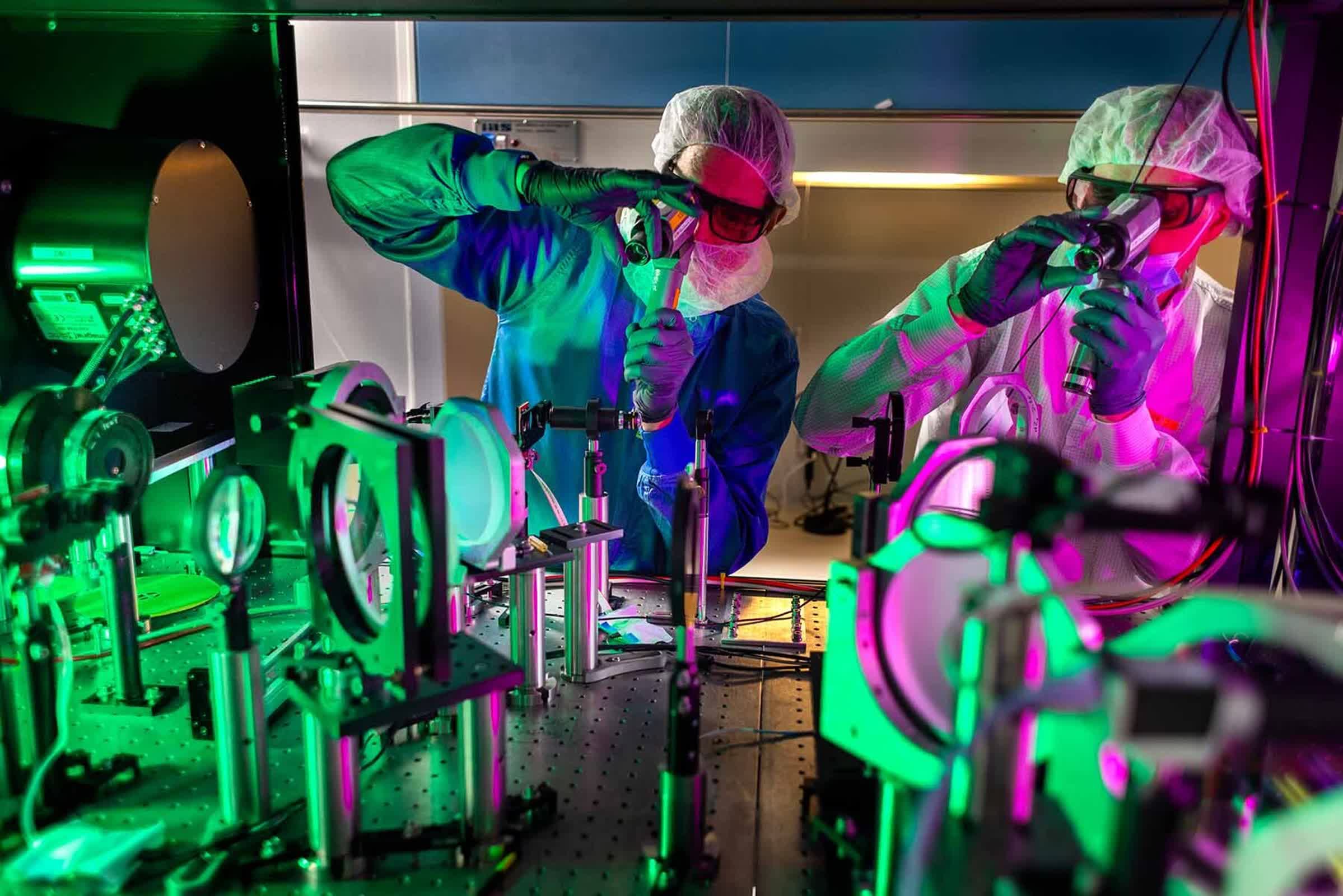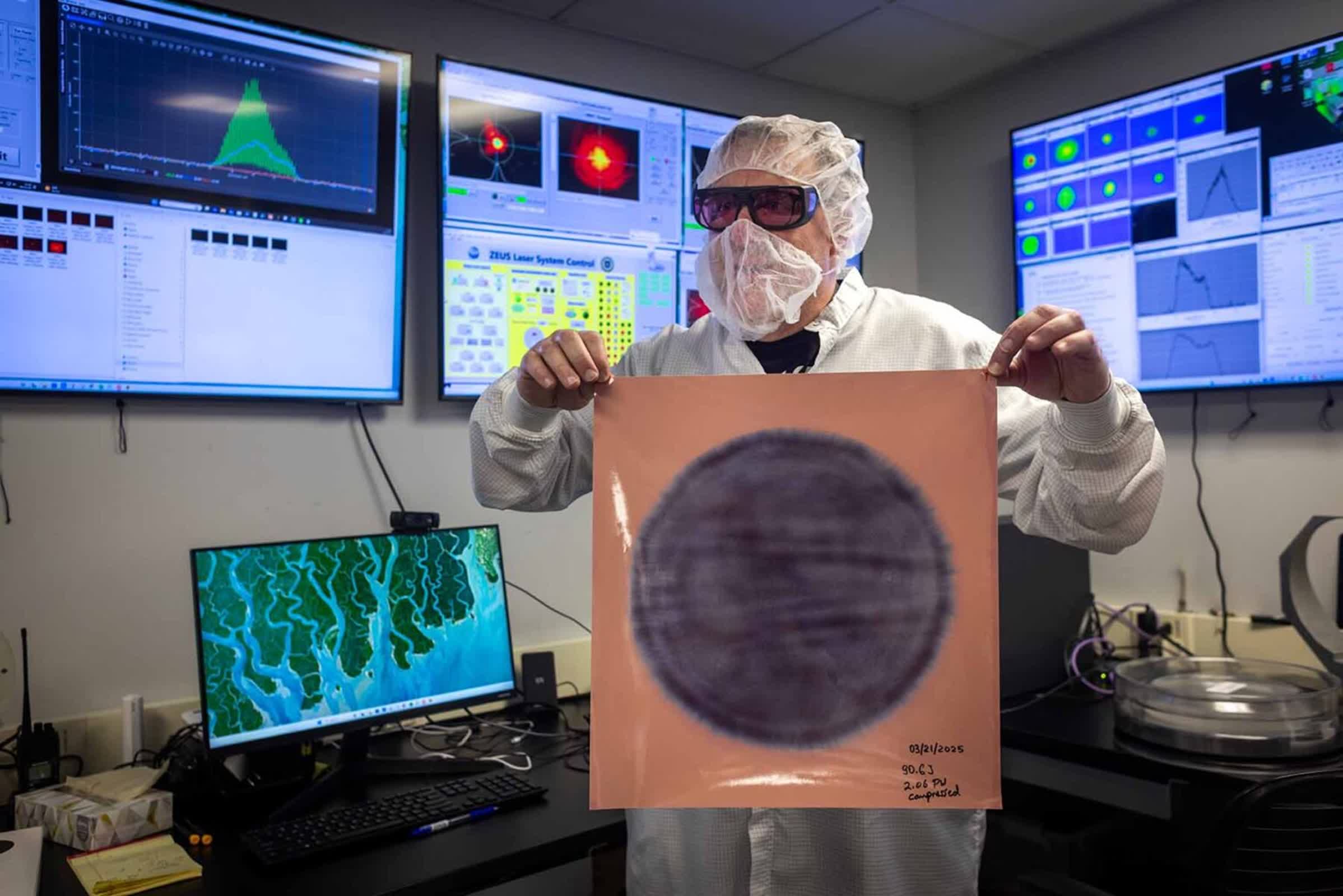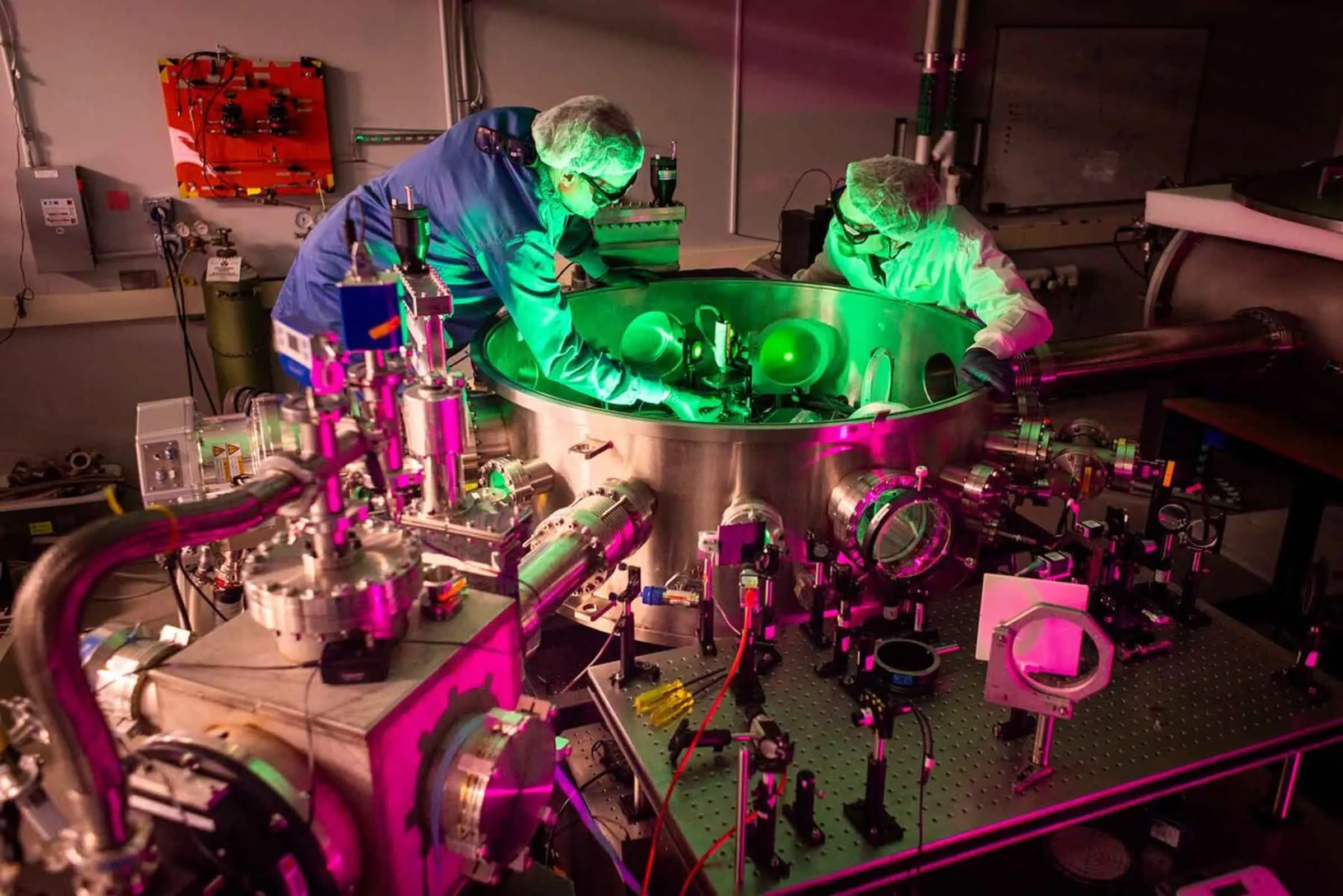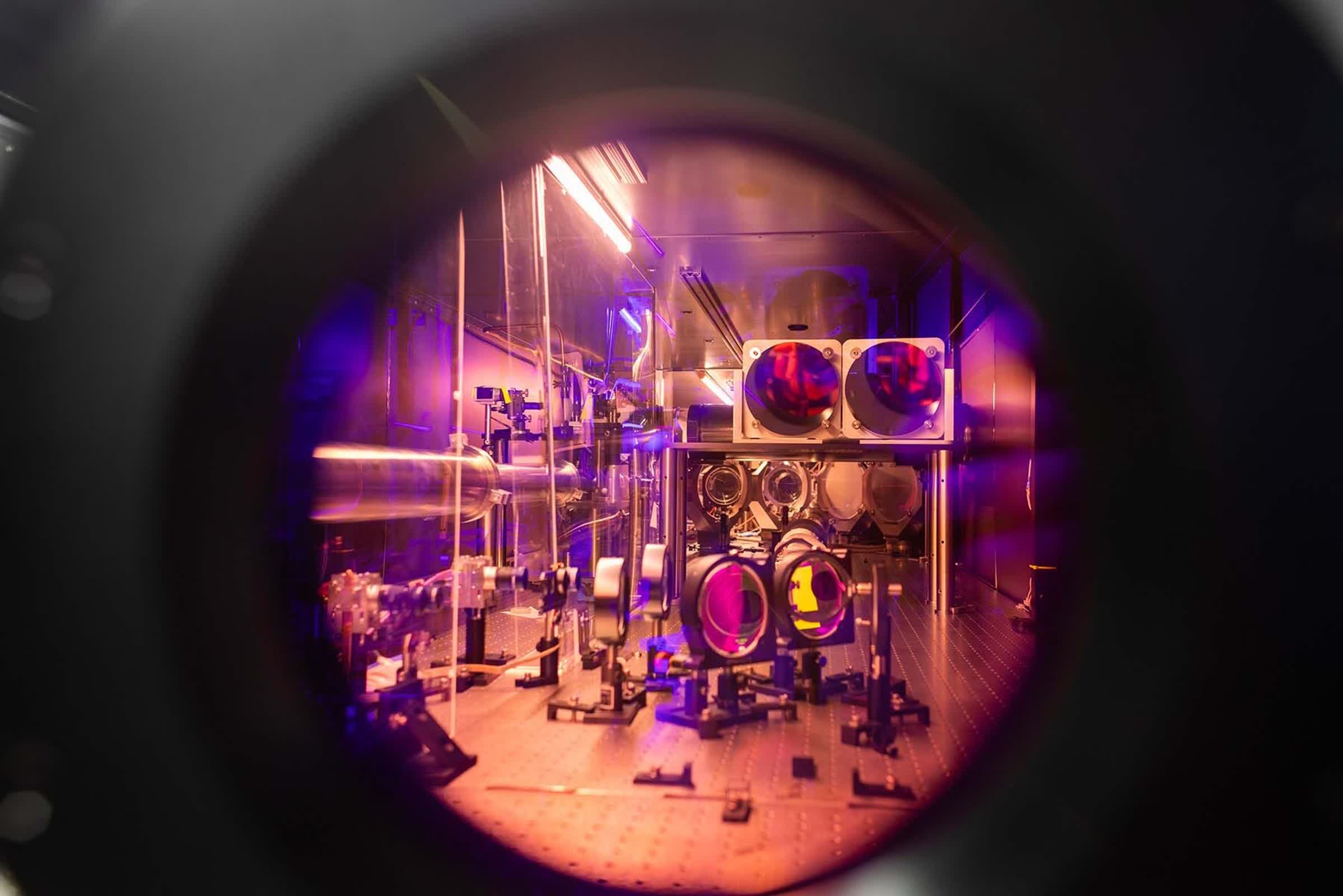The big picture: With its first 2-petawatt experiment successfully completed, ZEUS is poised to push the boundaries of high-field science, providing researchers with a powerful new tool for discovery and innovation. The team continues to upgrade the system toward its full capacity, even as user experiments are already underway.
The ZEUS laser facility at the University of Michigan has vaulted the United States to the forefront of high-intensity laser science. In its first official experiment, ZEUS achieved a peak power of 2 petawatts – twice the output of any other laser in the country. Although this burst, more than 100 times the world's total electricity output, lasts only 25 quintillionths of a second, it represents a major milestone in American research capabilities.
"This milestone marks the beginning of experiments that move into unexplored territory for American high field science," said Karl Krushelnick, director of the Gérard Mourou Center for Ultrafast Optical Science, which houses ZEUS. The university describes the facility, constructed for $16 million, as a "bargain" given its scale and potential.

Supported by the US National Science Foundation, ZEUS operates as a user facility, welcoming research teams from across the country and around the world. Proposals for experiments are selected through an independent review process, ensuring that the laser's capabilities are used for the most promising scientific inquiries. Research conducted at ZEUS is expected to advance fields such as medicine, national security, materials science, astrophysics, plasma science, and quantum physics.
The ZEUS system is primarily built from commercial components and incorporates advanced technologies, including a double chirped pulse amplifier and programmable acousto-optic filters that preserve the precise bandwidth and phase required for ultrashort, high-power pulses. The laser can deliver compressed pulses as brief as 20 femtoseconds, enabling a wide range of cutting-edge experiments.

Inside a space roughly the size of a school gymnasium, ZEUS houses three distinct target areas, each tailored to specific research applications. Target Area 2 is designed for experiments involving solid targets and ion acceleration, while Target Area 3 is optimized for laser wakefield acceleration and can measure electron energies up to approximately 5 GeV.
The facility's ability to split its beam allows it to achieve intensities up to a million times greater than a single beam alone, enabling the study of extreme phenomena such as quantum vacuum structures and the creation of matter-antimatter pairs from empty space.
"One of the great things about ZEUS is it's not just one big laser hammer, but you can split the light into multiple beams," said Franklin Dollar, a professor at the University of California, Irvine, whose group is conducting the first user experiment at 2 petawatts.

Dollar's team, in collaboration with ZEUS scientists, is working to generate electron beams with energies comparable to those produced by particle accelerators hundreds of meters in length. Their goal is to reach electron energies five to 10 times higher than any previously achieved at ZEUS.
"We aim to reach higher electron energies using two separate laser beams – one to form a guiding channel and the other to accelerate electrons through it," explained Anatoly Maksimchuk, a University of Michigan research scientist leading the development of experimental areas.
To achieve this, the researchers redesigned the target by lengthening the cell that holds the helium gas. When the laser pulse strikes this gas, it creates plasma by stripping electrons from atoms, turning the gas into a mixture of free electrons and positively charged ions. The electrons are then accelerated in the wake of the laser pulse, a process known as wakefield acceleration. Because light travels more slowly through plasma, the electrons can catch up to and ride the pulse, gaining more energy over a longer distance in the less dense, extended target.
This demonstration of ZEUS's power serves as a precursor to the facility's signature experiment, expected later this year, in which accelerated electrons will collide with laser pulses traveling in the opposite direction. In the electrons' reference frame, the 3-petawatt laser pulse will appear a million times more powerful – a zettawatt-scale pulse – giving ZEUS its full name: "Zettawatt Equivalent Ultrashort laser pulse System."
The potential benefits of ZEUS extend far beyond physics, impacting advancements in healthcare, technology, and economic development, said Vyacheslav Lukin, program director in the NSF Division of Physics. "The fundamental research done at the NSF ZEUS facility has many possible applications, including better imaging methods for soft tissues and advancing the technology used to treat cancer and other diseases," he said.
ZEUS's experiments may also help explain astrophysical phenomena such as positron jets from black holes and gamma-ray bursts, bridging laboratory science with some of the universe's most mysterious events.
The journey to achieving 2 petawatts has not been without obstacles. The nearly 7-inch diameter titanium-doped sapphire crystal needed for the final amplifier took several years to procure. "The crystal that we're going to get in the summer will get us to 3 petawatts, and it took four and a half years to manufacture," said Franko Bayer, ZEUS project manager. "The size of the titanium sapphire crystal we have, there are only a few in the world."
Technical challenges also emerged during the transition from the 300-terawatt HERCULES laser to ZEUS's 1-petawatt system. Unexpected darkening of the diffraction gratings was traced to carbon deposits formed when the powerful beam interacted with residual molecules in the vacuum chamber. The team established safe operating limits to prevent further damage.
Since opening in October 2023, ZEUS has hosted 11 experiments involving 58 researchers from 22 institutions, including international participants. The facility's user model is similar to that of other major research centers, such as SLAC National Accelerator Laboratory's LCLS-II, and it is already attracting global collaborations.
Image credit: Marcin Szczepanski
